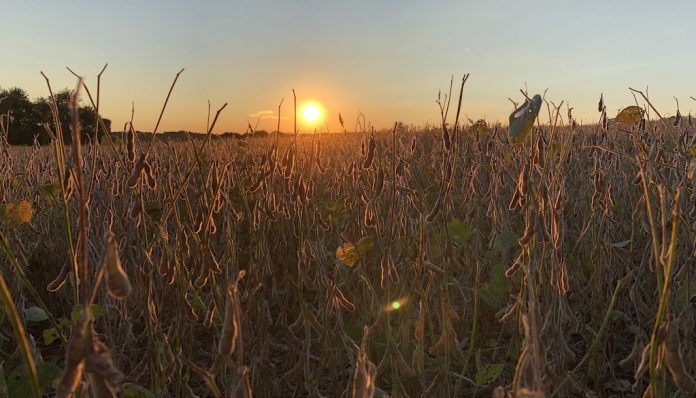In the dark ages of the early 1950s, just after Dad had bought the home farm from his mother, he lost 100 acres of corn two years in a row to the mud.
I remember the wooden platform he built onto the hitch arms of a DC Case tractor so we could go into the driest areas of one field and hand pick enough corn, a few bushels at a time, to feed my brother’s 4-H cow.
Talk about hard times.
This was not the “good old days.” This was before modern varieties that stood up all winter if you were lucky. This was when his second job had to support us, and when he came close to giving up. This was when he started to say what I heard him say many times later, “The dry years will scare you to death, but the wet years will starve you to death!”
The spring after the second crop failure, he came home with a 1950 Buckeye tiling machine. He went to the field with four kids, ages 7 to 12, only the youngest a boy, and we learned to put in tile.
Fairly quickly he added an experienced older man who was mostly a hermit and totally an alcoholic. He swore at us in English and German, and taught us what to do behind the machine while Dad ran it. We ran that machine, with modifications and rolling rebuilds in a four-year rotation for 30 years and 1.5 million feet of tile.
Delayed planting in 2019
There were some good memories from that tiling, but mostly I remember it because of the miserable wet year we are having across the entire Midwest.
As I write this, USDA has reported that Ohio has only 4 percent of the corn crop planted as of Sunday night, the 12th of May. It does not look like we will plant anything this week in most of Ohio. We planted just 2 percent last week. By this time last year, we had planted 50 percent, and our average planting at this date is 47 percent.
Based on our Russell conference call Monday morning, the same is true almost everywhere. Much of Iowa has made good progress, and there are small spots elsewhere, but the nation as a whole is only 23 percent planted. Most people on the call expected only a small window of planting this week, based upon the weather reports.
Last year, when we were delayed until the middle of May, we had 59 percent of the corn in, against a 66 percent average. This year we cannot now come close to that.
Analysts and farmers alike are comparing 2019 to 1993. That was the year we watched videos on TV most nights of levies failing and farm houses being washed away. That was the year the Big Muddy was 10 miles wide in places.
We are not that bad yet, but the planting progress is similar. The Mississippi is not navigable north of St. Louis. Naw’lins is being flooded, and that is terrible, although I have a problem understanding why people want to live in a city where more than half is below sea level.
Worse news for grain markets
In the middle of this mess comes the USDA Supply and Demand Report last Friday, May 10. Uncle Sugar put out the first projections for the 2019 crop, and they were shocking.
The ending stocks were 100 million bushels above the highest trade guess going into the report. USDA raised the planted acres, kept the yield at trend-line level, and raised the beginning stocks. The result was a 30-year record high production and a 30-year record high total supply and a 30-year record high carryout.
The USDA numbers were so bad that the collapse of the Chinese trade talks and the additional tariffs on Chinese goods that started Friday was not the worse news.
An advisor from St. Paul said that Friday was the worst day of his 30 years in the grain business!
So, where do we go from here? Scripture says the farmer must plant with hope. Hope is lacking just now.
There is a hint of hope, however. After the worst day in 30 years, December corn futures closed Friday just three-quarters of a cent lower! Monday saw some follow-through to a new low of 3.63 3/4, but we closed back up at 3.76 1/2. Tuesday in early trading we are up 9 cents to 3.85 1/2.
Soybeans at the same time got down to the 8.30 contract low the second day in a row Friday, but closed at 8.33 1/2. Monday we saw an ugly drop to a new low of 8.15 1/2, but closed at 8.30 1/2, just above the old low. Today, Tuesday, November soybeans are up 19 3/4 cents in early trading.
The reality is that the bad weather is not in the USDA reports. In 1993, the corn yield was 20 bushels less than expected. Even 10 bushels lower with fewer acres and lower yields from delayed-planted corn would vastly change the final crop production.
USDA is projecting 14.42 billion bushels. It will not happen.











